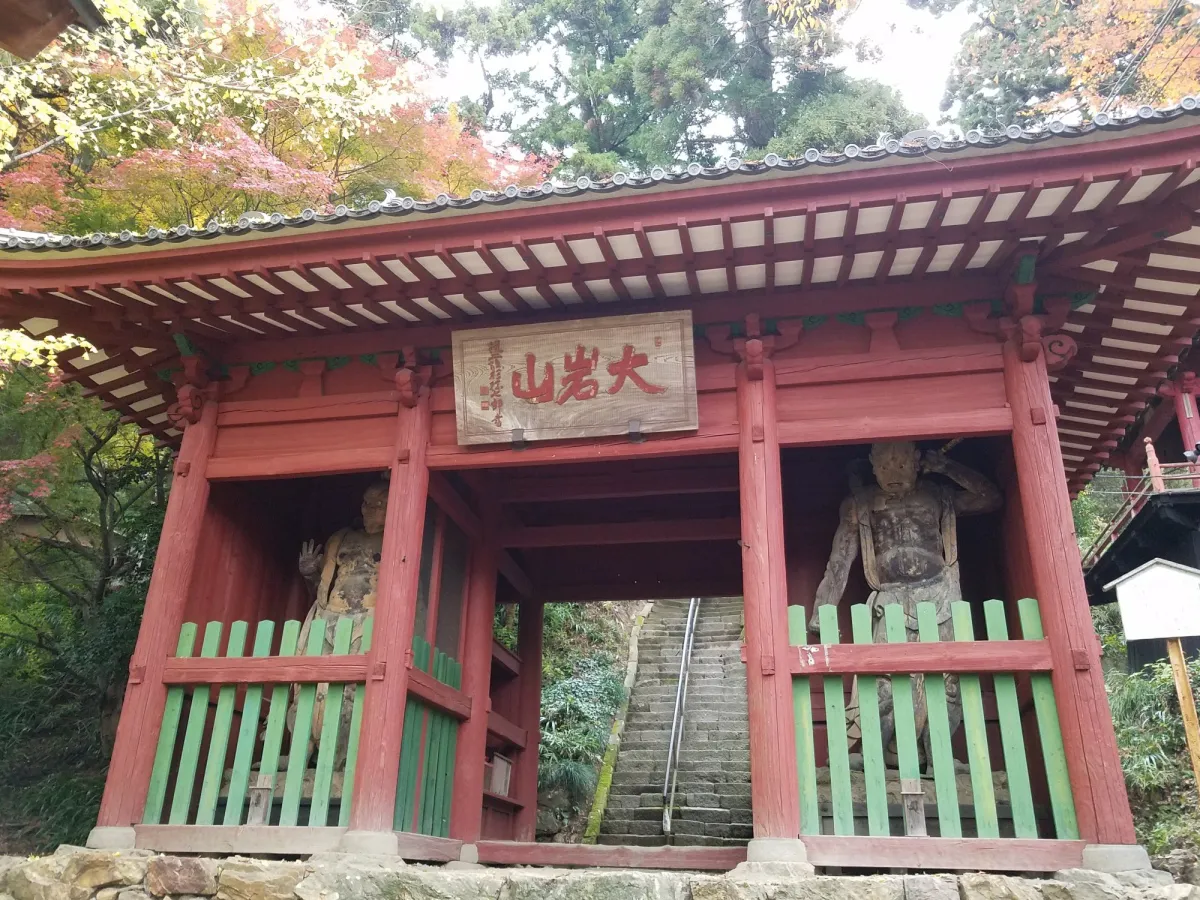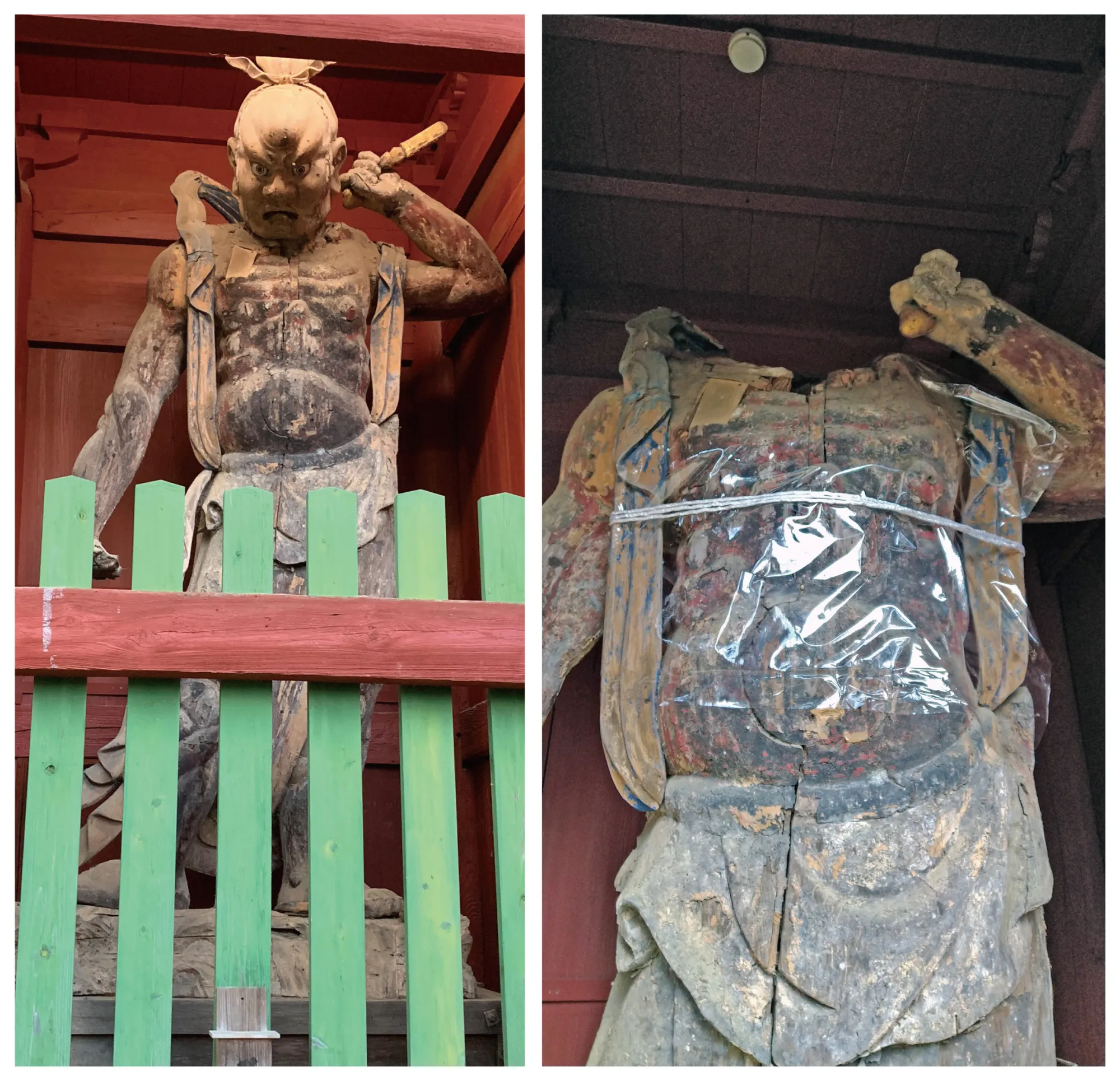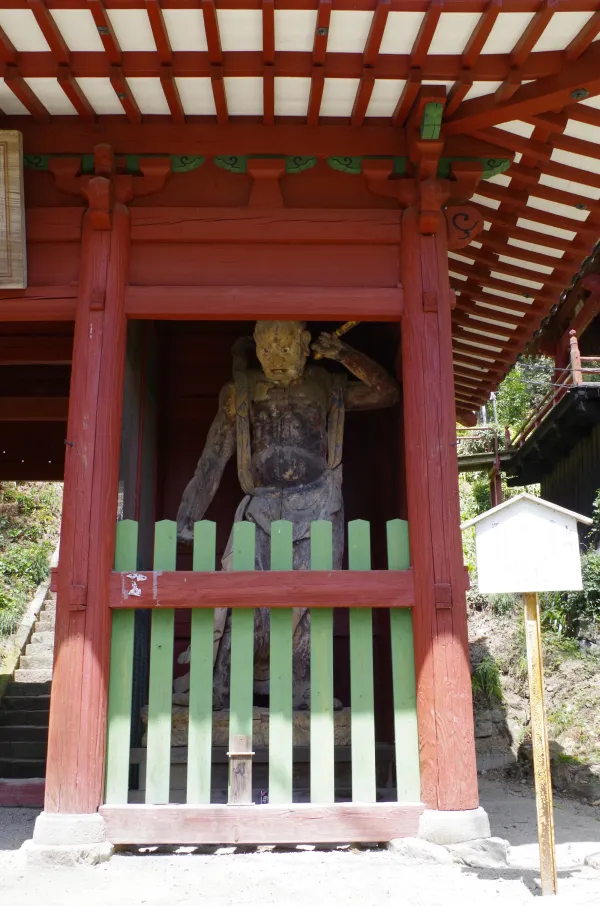About Kongo-Rikishi Statues Restoration Project
Kongo-Rikishi statues of Oiwasan Bishamonten

The Kongo Rikishi statues of Oiwasan Bishamonten is enshrined inside the Sanmon gate in the middle of the precincts.
Facing the Sanmon Gate, the two statues, the A-gyo on the right and the Un-gyo on the left, are called the Kongo-Rikishi statues. Both are said to have been created by Unkei.
Since ancient times, it has been called Nio-sama and has been worshiped and worshiped by people who come to worship.
Along with the principal image of Bishamonten, it is considered a protector of the law and is responsible for protecting Buddhism.
Kongo-Rikishi statue (A-gyo:open-mouthed form)

The statue enshrined to the right of the Sanmon gate is called A-gyo.
The height of the statue is 280cm, and its mouth is wide open in the shape of an "a".
A is the beginning character of the Sanskrit character, and represents the beginning of things, symbolizing the root from which all things arise.
A-gyo is shirtless and is wearing a heavenly robe. He holds a vajra in his left hand and has a stern look to keep evil away.
Kongo-Rikishi statue (Un-gyo:closed-mouthed form)

To the left of the Sanmon gate is a statue called Un-gyo.
Compared to the A-gyo, the Un-gyo has a tighter mouth and is shaped like a mouth that says "hmm."
Un is the last character of Sanskrit and means the end of things, symbolizing the ultimate end of all things.
Un-gyo does not carry anything in his hands, but instead has his right hand wide open, giving him a strong appearance that prevents evil from passing through.
Sanmon gate and Kongo-Rikishi statues

According to the auspicious origins of Oiwasan Bishamonten, after Gyoki Bosatsu opened Oiwasan Bishamonten in the 17th year of Tenpyo (745), the the Sanmon gate was erected at the imperial request of Emperor Shomu. Later, in 1447, all the halls were destroyed by lightning, but it is said that only the Sanmon gate survived.
The existing Sanmon gate was built in 1693, and restoration work was carried out in 1755 and 2005.
The Kongo-Rikishi statues enshrined at the Sanmon gate, which was restored in 2005, has been severely damaged by the weather and environment over the years, and there have been many requests for its restoration. Therefore, we initiated the restoration of the Kongo-Rikishi statues as a commemorative project for the Great Enthronement.



At Oiwasan Bishamonten, we are carrying out a restoration project of the Kongo-Rikishi statues (A-gyo and Un-gyo) at the Sanmon gate as a commemorative project for the accedence of the present emperor.